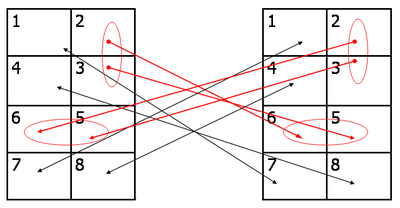Mirage relations

Symmetric relations.
Signs of corresponding functions are the same.
Function interaction: 1 ↔ 7, 2 ↔ 6, 3 ↔ 5, 4 ↔ 8.
Reading the relations name you might wander where the "mirage" is. Is the name suggesting a kind of illusion or false perception?
Interaction 1 ↔ 7 has no "mirage" quality. The function 7 is more than capable to clearly evaluate the strength of the partner's function 1. This evaluation is done by another high-dimensional function of the same sign.
It seems that the mirage effect is produced not by the function 1 but by the function 3 (3 ↔ 5). At the first encounter, at the first glance the partner is demonstrating his superego, namely - the role function. As if trying to say: please, accept me, I am so correct, my function 3 can do everything as required. This can be correct attitudes, correct smiles, show-off efficiency or logic or insight, good looks, etc. And all this reaches the partner's suggestive function. The first appearance can be deceptive. Lets not forget that there is simultaneous influence from the function 2 to the function 6 - activation. After some time, the partner's effort weakens and he stops demonstrating his role function. Even more so when the relashinship becomes an old one. And the remaining activation alone without the expected information feed to the function 5 is not so much efficient. That's when the soap bubble bursts. The mirage has gone. The eventual relationships fully depend on the individual context. Interaction of the function 8 and 4 (4 ↔ 8) in the mirage relations causes no inconveniences because id functions usually are not verbalized and have self-centered attitude (similarly to the duality relationships). At close psychological distance and for long-term relationships the partners will have to change their ingrained id habits in order to adapt to their partner.